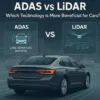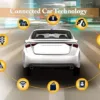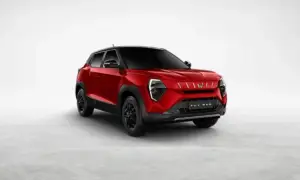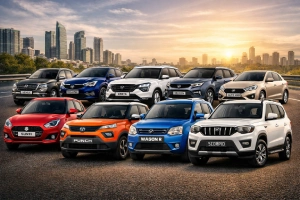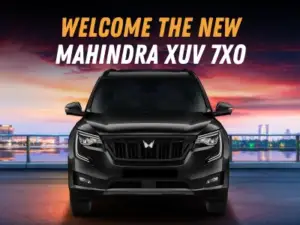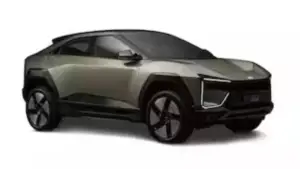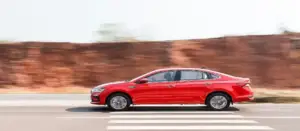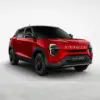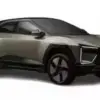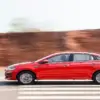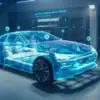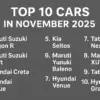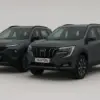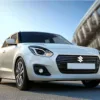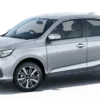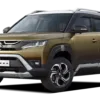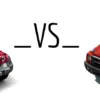In the rapidly advancing world of automotive engineering, automatic sensor technology has become the backbone of innovation. From detecting nearby vehicles to anticipating potential collisions and even parking a vehicle automatically, sensors are redefining how we drive and how vehicles interact with their surroundings.
Automatic sensors are crucial in ADAS (Advanced Driver Assistance Systems), autonomous driving, car safety, and performance optimization. This post explores every essential aspect of automatic sensor technology in cars—how it works, its types, advantages, challenges, and future prospects.
🔧 What Are Automatic Sensors in Cars?
Automatic sensors are electronic devices that detect physical conditions such as distance, speed, temperature, pressure, or motion. In cars, these sensors collect real-time data from the vehicle’s surroundings and internal systems and send this data to the onboard computer (ECU). The system then makes automated decisions or notifies the driver accordingly.
🔍 Types of Automatic Sensors Used in Cars
1. Ultrasonic Sensors
- Used for: Parking assistance, obstacle detection in short-range
- How it works: Emits high-frequency sound waves and calculates time to return.
- Example: Rear parking sensors that beep when you’re too close to an object.
2. Radar Sensors
- Used for: Adaptive cruise control, collision avoidance, blind-spot monitoring
- How it works: Emits radio waves and measures reflected signals to calculate speed and distance.
- Example: Detecting vehicles ahead and adjusting speed automatically.
3. LiDAR Sensors (Light Detection and Ranging)
- Used for: 3D mapping of surroundings, autonomous navigation
- How it works: Emits laser beams and measures return time to create a precise environment map.
- Example: Self-driving cars like Waymo or Tesla FSD prototypes use LiDAR.
4. Camera Sensors
- Used for: Lane departure warnings, traffic sign recognition, pedestrian detection
- How it works: Uses computer vision to process visual data from the environment.
- Example: Tesla’s Autopilot heavily relies on camera vision systems.
5. Infrared Sensors
- Used for: Night vision assistance, pedestrian detection in low light
- How it works: Detects heat signatures from objects or humans.
- Example: Mercedes-Benz Night View Assist.
6. Gyroscopic and Accelerometer Sensors
- Used for: Stability control, rollover detection
- How it works: Detects angular rotation and acceleration for motion analysis.
- Example: ESP (Electronic Stability Program) systems in cars.
🚗 Key Applications of Automatic Sensors in Cars
✅ 1. Advanced Driver Assistance Systems (ADAS)
Sensors enable features like:
- Lane Keep Assist
- Blind Spot Detection
- Automatic Emergency Braking (AEB)
- Adaptive Cruise Control
✅ 2. Autonomous Driving
Self-driving cars require a fusion of sensor data to interpret surroundings and navigate:
- LiDAR + Camera + Radar for environment mapping
- GPS + Inertial sensors for precise location tracking
✅ 3. Safety Enhancements
- Airbag deployment sensors detect the severity of crashes.
- Tire pressure sensors (TPMS) prevent blowouts.
- Collision warning sensors minimize risk of accidents.
✅ 4. Comfort and Convenience
- Rain sensors auto-activate wipers.
- Light sensors manage headlight brightness.
- Proximity sensors in keyless entry systems.
🔄 Sensor Fusion: Combining the Power of Multiple Sensors
Sensor fusion is the process of combining data from different sensors to produce more accurate and reliable results. For instance:
- LiDAR provides precision but is expensive.
- Radar is great for detecting objects in poor weather.
- Cameras help in classification (is it a human or a pole?).
Together, these provide a complete understanding of the car’s environment—especially critical for autonomous vehicles.
🛠 Real-Life Examples of Sensor Technology in Cars
| Car Model | Sensor-Based Features |
|---|---|
| Tesla Model Y | Cameras, ultrasonic, radar for Autopilot & Full Self-Driving |
| Mercedes-Benz S-Class | LiDAR + Radar + Camera for Drive Pilot (Level 3 autonomy) |
| Tata Nexon EV Max | Reverse parking sensors, TPMS, rain sensors |
| Mahindra XUV700 | ADAS with adaptive cruise, blind spot, lane keep assist |
| Hyundai Tucson | SmartSense ADAS, radar-based cruise, forward collision warning |
🌐 Impact on Road Safety and Accident Prevention
According to the World Health Organization, over 1.3 million people die in road accidents annually. Automatic sensors significantly contribute to:
- Reducing human error
- Warning about lane drifting or dozing off
- Automatic braking before collision
- Pedestrian and cyclist detection
As per a study by NHTSA, AEB systems reduce rear-end crashes by 50%, showing how vital sensor tech is in saving lives.
💡 Challenges in Sensor-Based Car Technology
| Challenge | Details |
|---|---|
| Weather Conditions | Rain/fog can affect cameras and LiDAR |
| High Cost | Advanced sensors like LiDAR are expensive |
| Software Integration | Requires robust AI and machine learning for accurate decision-making |
| Maintenance and Repairs | Damaged sensors can misguide the system; diagnosis is expensive |
| Privacy Concerns | Constant surveillance raises data protection issues |
📈 Future of Automatic Sensor Technology in Cars
As we move toward Level 4 and Level 5 autonomy, the role of sensors will only become more critical.
🔮 Key Trends:
- Solid-State LiDAR becoming cheaper and more compact
- AI-powered sensor fusion for smarter decisions
- Vehicle-to-Vehicle (V2V) and Vehicle-to-Infrastructure (V2I) sensor communication
- Predictive maintenance sensors that warn before parts fail
- Augmented reality HUDs using sensor data for visual overlay
Major OEMs like Toyota, BMW, and even Indian brands like Tata and Mahindra are investing heavily in sensor technology to stay competitive in the evolving mobility landscape.
🧠 Conclusion: Why Sensor Technology Is a Game Changer
Automatic sensors in cars are more than just high-tech accessories—they are transforming how we interact with vehicles. With enhanced safety, driver comfort, and future autonomy, sensors are setting the stage for a world where accidents are rare, driving is smarter, and our roads are safer.
If you are buying a car today or in the near future, make sure to check its sensor-based features, as they are becoming a new standard for both luxury and safety.


